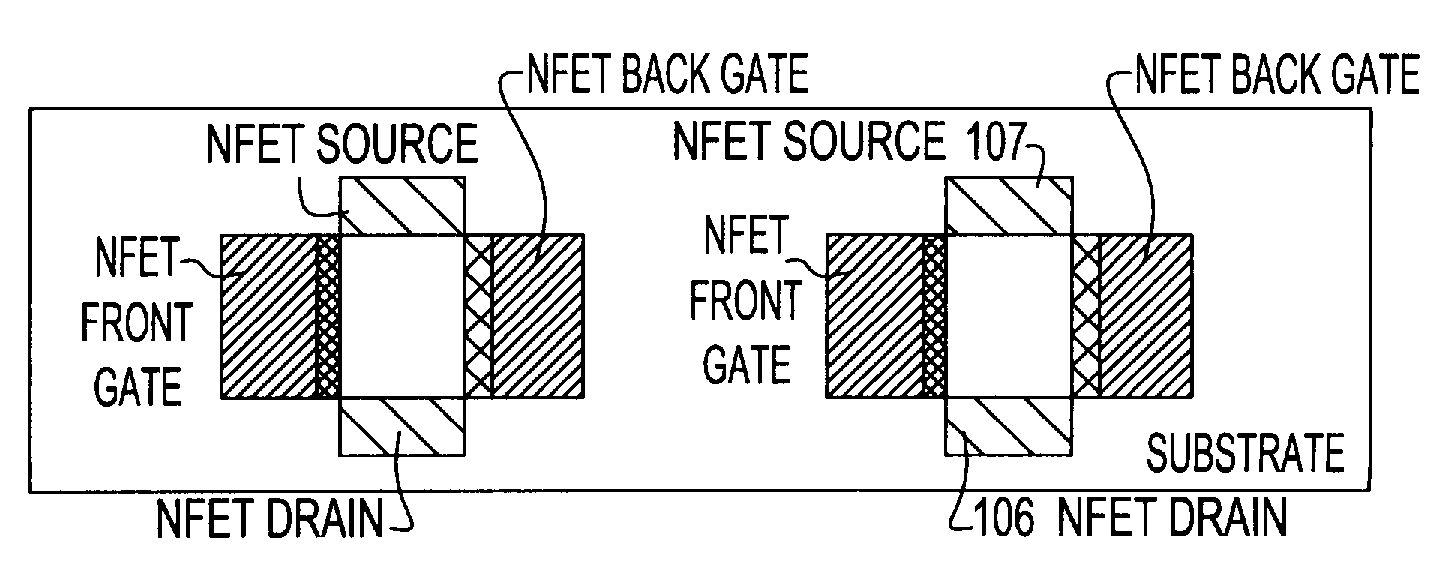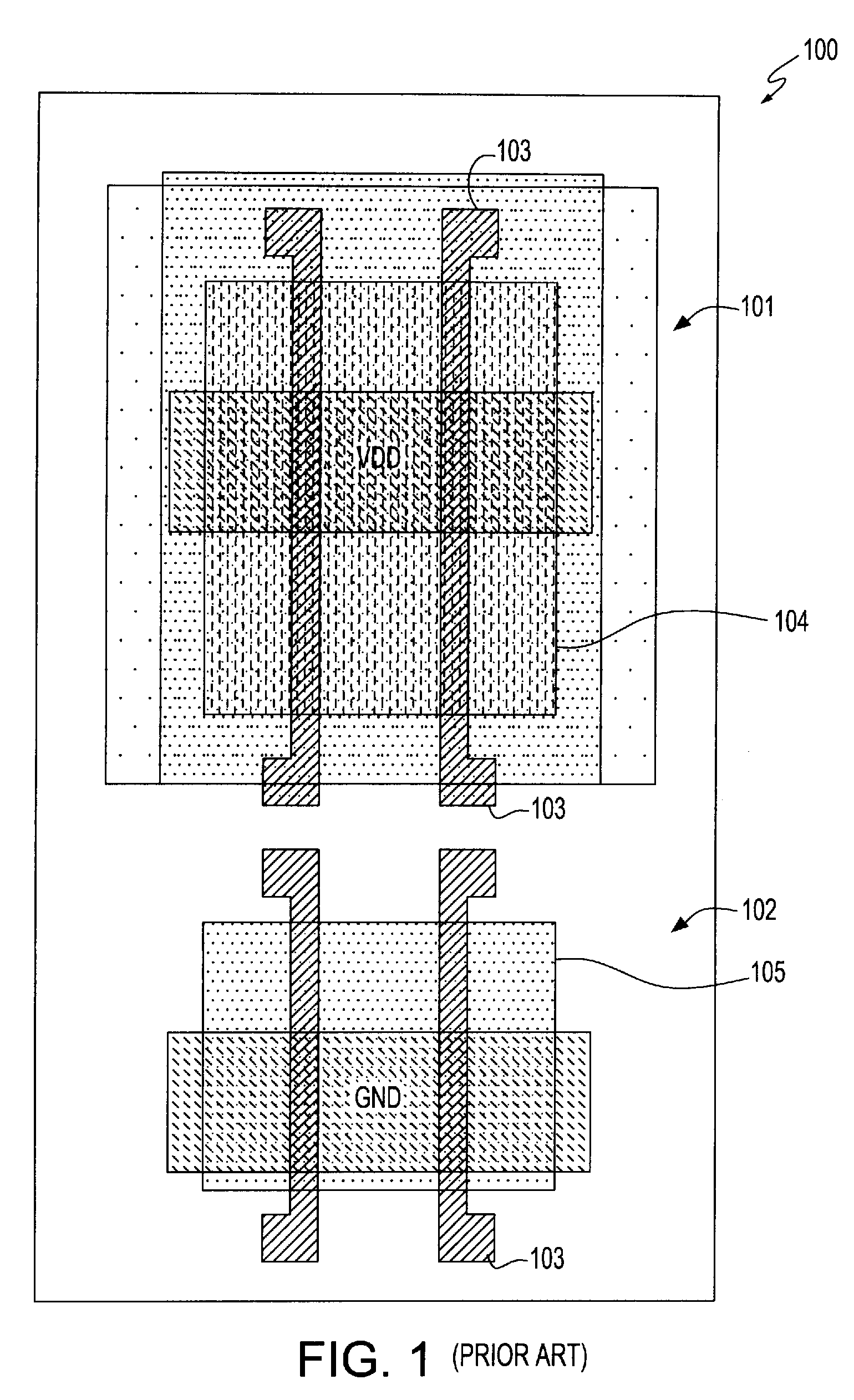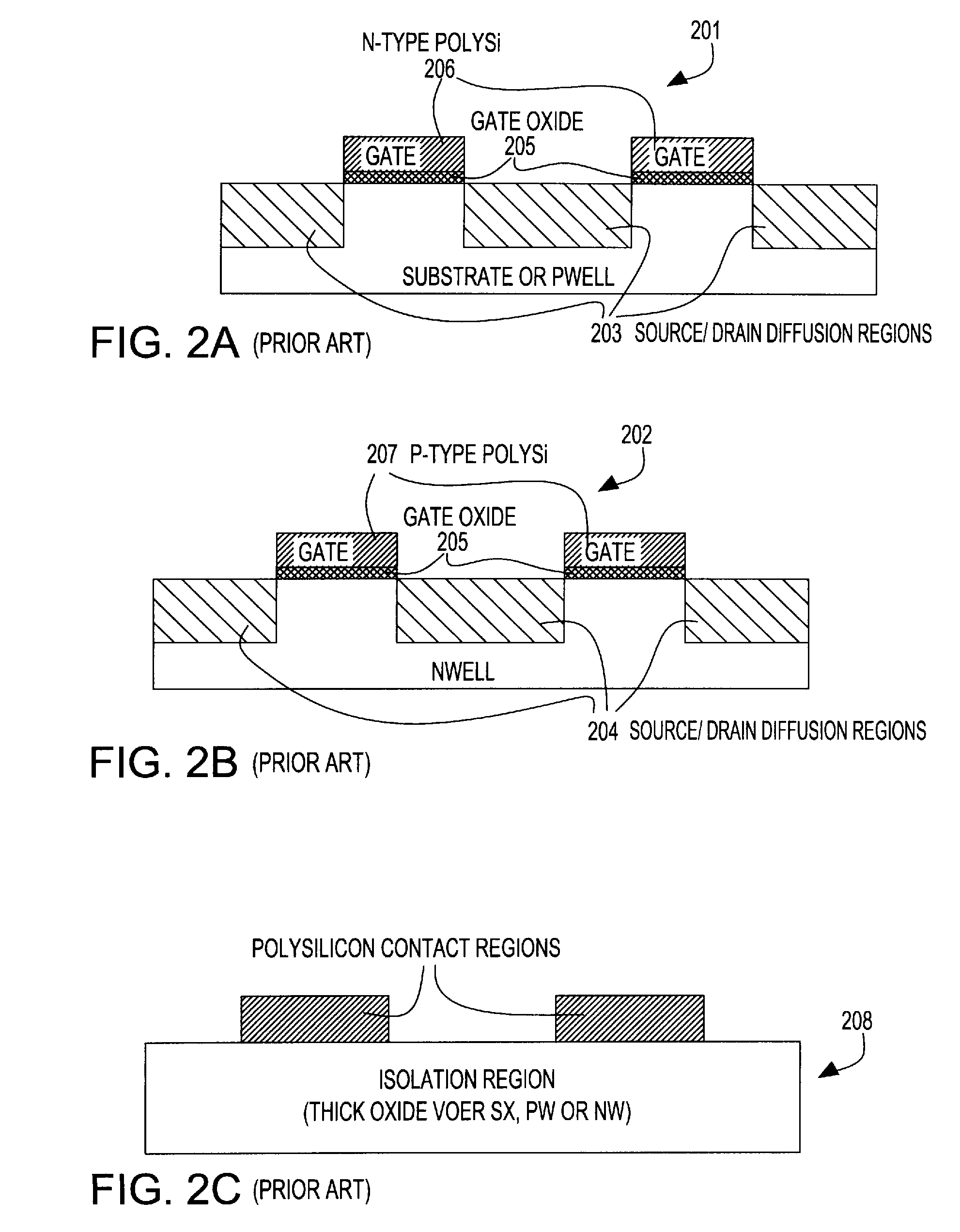Dual gate fet structures for flexible gate array design methodologies
a flexible gate array and design methodology technology, applied in the direction of pulse technique, solid-state device, instruments, etc., can solve the problems of high cost, long design cycle and manufacturing time, and high cost of standard cell ic design errors
- Summary
- Abstract
- Description
- Claims
- Application Information
AI Technical Summary
Benefits of technology
Problems solved by technology
Method used
Image
Examples
Embodiment Construction
[0037]In a first aspect of the invention, a gate array cell utilizing dual gate NFET and PFET structures is presented. FIGS. 9a-c illustrate cross sections of a planar dual gate embodiment of the gate array cell which consists of two NFETs and two PFETs by example, but those skilled in the art will appreciate that many configurations with alternative FET counts are possible. The source and drain diffusion regions for the gate array cell are positioned at the far left and right of the cell in each of the PFET and NFET regions as well as in the center of the cell in the respective FET regions similar to prior art structures shown in FIGS. 1 and 2. However, the prior art surface channel FETs are replaced by dual gate FETs, which may be either symmetric or asymmetric in performance. The basic gate array cell structure is also differentiated from the prior art in that allocation is made for contacting of both the front and back gate of each transistor within the isolation regions of the ...
PUM
 Login to View More
Login to View More Abstract
Description
Claims
Application Information
 Login to View More
Login to View More - R&D
- Intellectual Property
- Life Sciences
- Materials
- Tech Scout
- Unparalleled Data Quality
- Higher Quality Content
- 60% Fewer Hallucinations
Browse by: Latest US Patents, China's latest patents, Technical Efficacy Thesaurus, Application Domain, Technology Topic, Popular Technical Reports.
© 2025 PatSnap. All rights reserved.Legal|Privacy policy|Modern Slavery Act Transparency Statement|Sitemap|About US| Contact US: help@patsnap.com



